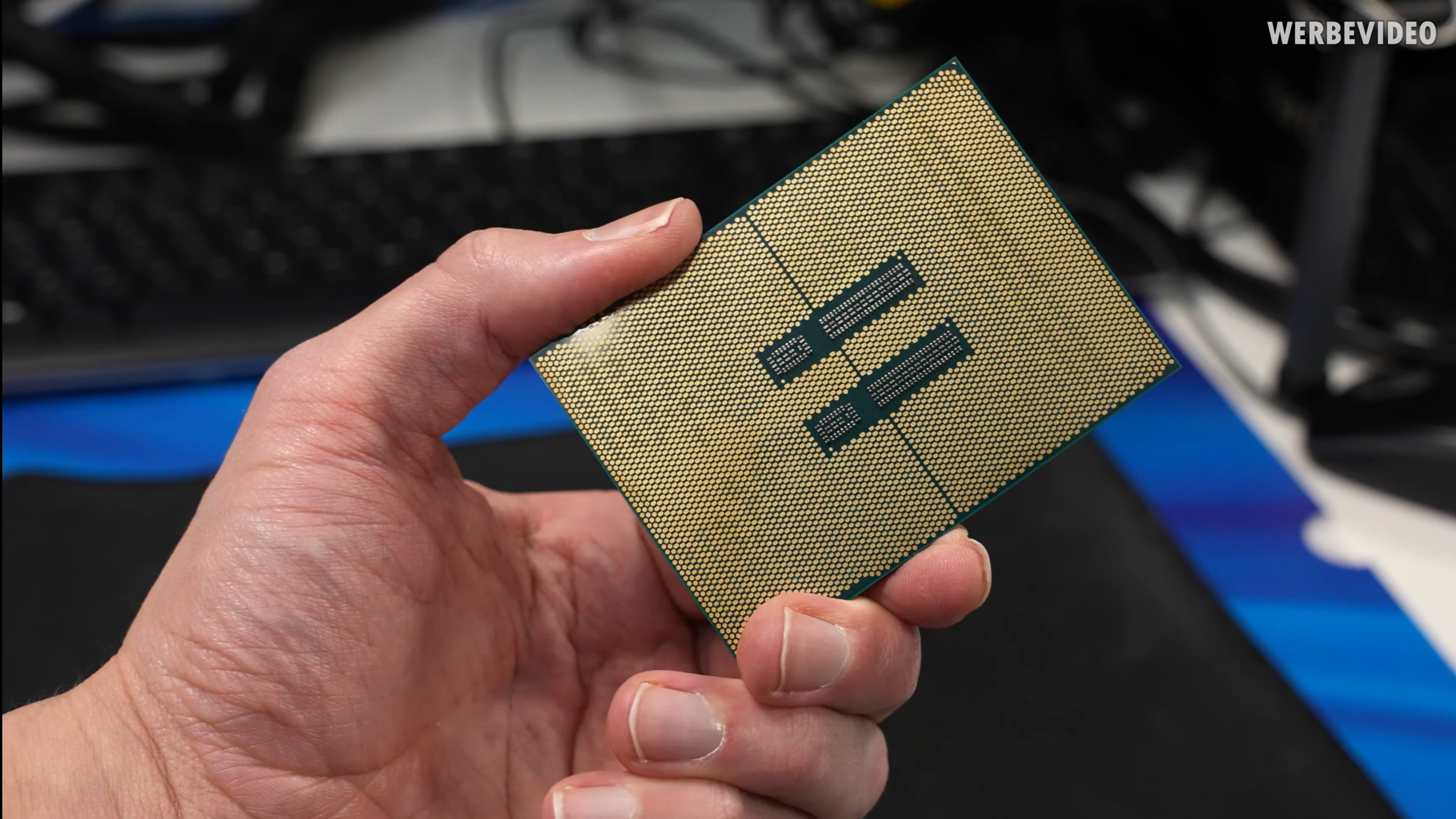I make no apologies for the geeky pleasure I get watching a 56-core CPU just monster this benchmark
Come watch some $6,000 CPU benchmarking pr0n with me.
If you fancy a little light, safe-for-work CPU pr0n then overclocking maestro, Roman ‘der8auer’ Hartung, has got their hands on an Intel Sapphire Rapids workstation processor and is starting to put it through its paces.
This quick video starts with an intro to the new high-end desktop chip running in Intel's overclocking labs, doing some Geekbench testing at 4.2GHz on all of the chip's 56 Performance-cores. It's running on a development platform, so not a retail setup, but still der8auer is able to show the system smashing the current record for Geekbench 5, set by an AMD Threadripper Pro 5995WX.
That record sits at 48,025 points, while the Sapphire Rapid chip is shown delivering a score of 53,817. Though it took a lot of power to get there. Even though the Intel Xeon W9 3495X monster CPU is only running at 1v, the video shows power spikes for the entire system sometimes getting close to the 1,100W point. Hell, the damned thing's idling at 364W.
The real geeky pleasure I derive from the little addendum to the video, however, is where der8auer actually has the final chip in their hand, at home in Germany, and chucks this mass of computational silicon at the more familiar Cinebench R23 benchmark.
Watching all 56 cores and 112 threads of peak Intel Performance-core processing power chewing through the admittedly bland render scene is something that I still cannot help but enjoy. What can I say? I'm a PC component nerd. I've been sat in the office watching that same benchmark quite a lot recently, as I put another unreleased high-end gaming CPU through its paces.
Der8auer hasn't had a chance to overclock the chip themself yet, and so the Cinebench run is the 56-core processor going through the benchmark at its stock 2.9GHz clock speed. But they do note that, while the Performance-cores are nominally the same as those in a Core i9 12900K, they have one slight difference: each comes with its own integrated voltage regulator.
That means, theoretically, you could set an individual voltage for each discrete core, allowing for some ludicrously fine-tuned overclocking.
Keep up to date with the most important stories and the best deals, as picked by the PC Gamer team.

I'm never going to get my hands on a chip of the size of the Sapphire Rapids CPU—and honestly I don't know if my fat little hands could even grip a processor of that scale—but then I also don't know if I would trust myself with a computing platform that costs at least $10,000.
I've got certain… shall we say accidentally destructive tendencies when it comes to technology. I mean, that's not a great look for someone who makes a living from testing hardware, but them's the breaks. If something can survive my benchmarking attentions it's obviously pretty well made at least.
The actual W9 3495X processor, the 56-core Intel chip in question, costs around $6,000 on its own. Then you've got to factor in a likely four-figure motherboard, a decent cooling solution, one hell of a power supply, and an octa-channel DDR5 S-DIMM memory kit. The costs are big.
And, y'know, unlikely to actually make one iota of difference when it comes to something so technologically facile as gaming on a workstation setup.
Still, it's nice to see those myriad threads chomping through a benchmark like so many Sapphire Rapids pac-men. We just won't mention the fact that the platform has launched about a year later than it was meant to.
Oops.
Best CPU for gaming: Top chips from Intel and AMD
Best gaming motherboard: The right boards
Best graphics card: Your perfect pixel-pusher awaits Best SSD for gaming: Get into the game first

Dave has been gaming since the days of Zaxxon and Lady Bug on the Colecovision, and code books for the Commodore Vic 20 (Death Race 2000!). He built his first gaming PC at the tender age of 16, and finally finished bug-fixing the Cyrix-based system around a year later. When he dropped it out of the window. He first started writing for Official PlayStation Magazine and Xbox World many decades ago, then moved onto PC Format full-time, then PC Gamer, TechRadar, and T3 among others. Now he's back, writing about the nightmarish graphics card market, CPUs with more cores than sense, gaming laptops hotter than the sun, and SSDs more capacious than a Cybertruck.


